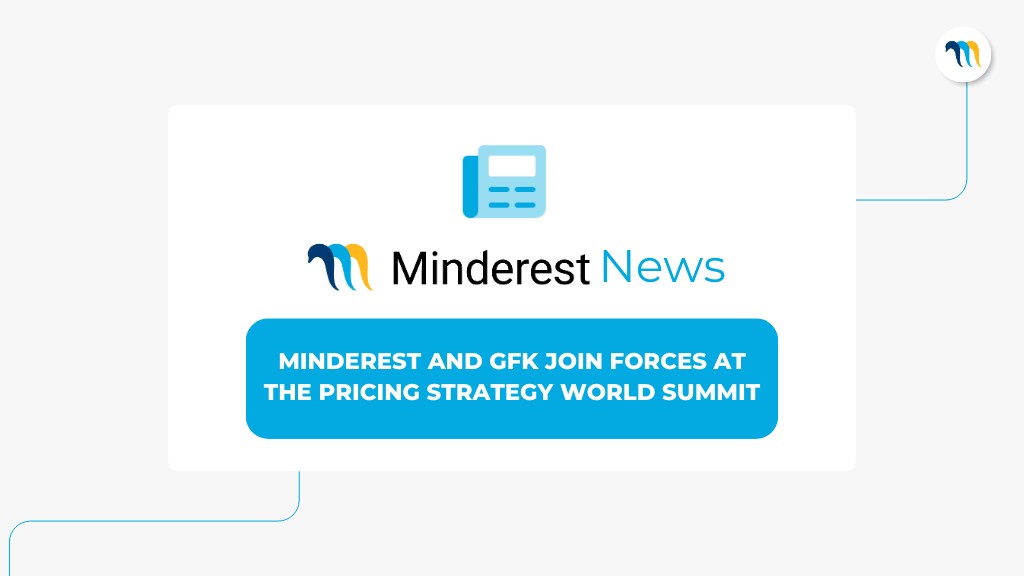

When we talk about price monitoring in an online store, we usually tend to talk about the idea of dynamic pricing, a strategy that’s increasingly being implemented by eCommerce businesses, allowing them to optimise their prices based on the market situation at that moment.
To carry out these types of strategies, technology is a fundamental pillar. It’s thanks to this technology that all kinds of actions can be monitored and automated through pricing software. These solutions allow the pricing actions defined by each eCommerce business to be carried out, with many added advantages such as maintaining profit margins. But they also are an important anchor to aid in development around the pricing strategy, which can encourage a boost in revenue for the business.
There are many different types of pricing software on the market, among which you can find those that monitor the prices of competitors and others that offer comprehensive business management. Thus, as is the case with Minderest, you can find different options that adapt themselves to your needs so that their control over your eCommerce business remains simple, clear, and, above all, useful.
In general, three factors have a direct relation to the actions carried out in regards to the pricing strategy: product stock, distribution channels, and marketing actions. All these can also feed into your pricing software. You simply need to know what the best tool for you is and where to look for it to be effective.
Stock monitoring
A proper pricing strategy must use the store’s inventory to know when and how much to compensate for adjusting the price of a product. Therefore, a pricing tool should also consider this factor as an added piece of data within its analysis.
In eCommerce businesses and stores with very wide catalogues (such as a supermarket, for example, or an eCommerce business which offers consumer products in a great number of versions, such as a perfumery or a drugstore), keeping track of the number of available units can be quite a complicated task.
Thanks to this “section” of the pricing software, it’s more than possible to keep the product database and warehouse stock list up to date. You’ll also be able to make adjusted forecasts of future income and revenue after carrying out price change actions based on the quantity that you have available of each reference in your catalogue.
Monitoring distribution and its prices
One of the most progressive characteristics of online commerce is that it allows you to directly combine the interests of one or more businesses to achieve a common benefit. This, in online brands, is the order of the day, allowing them to generate a network of digital distributors that can sell their products in exchange for the commission, profit margin, or agreement that they deem convenient.
Thanks to your pricing tool – and in relation to stock monitoring as well – you can estimate how many units each of your collaborators will sell along with the number of available units they have left. Anticipating future orders will help you to be prepared with the stock that you need and avoid any stop in sales.
In any case, the truly interesting thing here is that with the help of your pricing tool, you can monitor the prices at which your distributors are selling your products and services. You can do this through competition analysis (by selecting your distribution channel as the object to be studied) or through an online MSRP check.
Measure the effectiveness of your marketing actions at all times
The marketing actions that are carried out by stores and businesses are often closely related to pricing. Sales, promotions, and other actions related to added benefits (such as 2x1, for example) are key when it comes time to mark specific dates on your eCommerce business calendar.
We can define three factors that will contribute to the success of your campaigns:
The sales forecasts
The dates on which they are applied
The prices offered
How can a pricing tool help with these kinds of marketing actions? It can act as a central base for data collection. Your pricing software can offer you the inventory relationship that we already described; the dates when price changes occur in the market and in your competition; and an analysis of the reactions of your users thanks to the sales performance.
A posteriori, this same capacity for sampling will serve to help you analyse the success of any action that you have decided to carry out, compare these actions over time, and establish the necessary patterns to optimise them.
As you can see, your pricing solution can help you choose an approach with a much wider perspective towards the different aspects of your business. Choose a powerful pricing tool and take advantage of each and every one of the opportunities that it can offer you.

Find out how Minderest can take your business to the next level.
Contact our pricing experts to see the platform in action.
Related Articles

What is the Omnibus Directive? How can you integrate it into your pricing strategy?
The Omnibus Directive has made waves within eCommerce and marketplaces, establishing new standards for displaying prices on sales websites. Despite its importance, many eCommerce owners do not...
Minderest and GFk join forces at the Pricing Strategy World Summit in Munich
Minderest and Gfk will participate together as Online Price Monitoring Global Partners, in the prestigious Pricing Strategy World Summit from April 16 to 18 in Munich.The Pricing Strategy World Summit...